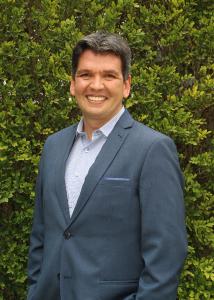Event reports
Inauguration
Armando Villanueva
Congressman and Chairman of the Energy Commission
Congressman and President of the Congress Energy Commission, Mr. Armando Villanueva, gave the inauguration speech, where he mentioned that he had the opportunity to participate in a meeting of African parliamentarians where countries informed the importance they were giving to climate change policies; for example, countries such as Kenya had projected, within other issues, their 100% energy production in renewable energies by 2030 and thus to supply not only the demand of their country, but also the need of their neighboring countries. He also mentioned that Bolivia by 2030 would have 20% of renewable energies.
Peru currently is supplied in 47% of hydroelectric power, with only 2.5% of non-conventional renewable energy. At the same time, Peru has 30% of rural energy deficit. There are 150,000 pending facilities and so far only 7,000 have been installed, for this reasons if we compare with Chile, we are falling behind, because the neighboring country has a target for the next 4 years to cover 100% of the energy deficit with renewable energies. For this reason we must begin to assume challenges, considering also that Peru is one of the territories most affected by climate change.
Climate change and renewable technologies: The climatic challenge of the XXI century
Pedro Gamio
Global warming should remain below 2 degrees Celsius, but we are not achieving this, we consume 1.5 times the resources that the planet can provide us. We are among the 10 countries most vulnerable to the climate change, considering that Peru has 85% of biodiversity.
The coast and the big cities have devoured the country over-exploiting resources and that will make us highly vulnerable. The coast has concentrated much of the infrastructure, which is absent in other areas of the country, for example, the quality of the electricity service in Lima and Callao has a higher performance level than the rest of the country and the smallest cities of the Peruvian mountains and in the jungle the service is inefficient with permanent supply problems. Therefore, it is very important to do that reform that, as the scientist and the sage Pulgar Vidal mentioned, “Peru should develop 18 transversal regions".
Decentralization should not be political; it should be essentially economic, generating value from an infrastructure that allows the development of positive productive chains in the interior of the country.
A study made by the Andean Community shows that by 2025, if a trend of overexploitation and global warming continues, the entire health and education budget will be compromised as a consequence of the effects of the climate change.
Situational analysis:
Main problems
-Deficient water resource management.
-Weak risk management.
-High perception of corruption in officials.
-Weak articulation of different levels of government.
-Low level of educational quality.
-Substandard housing.
-Poor organizational capacity.
-Informality.
-Limited control and inspection for the management of solid waste, toxic gases and wastewater.
Solutions proposals
In view of these problems and challenges we must arouse the intellect and the awareness of the people, and thus be able to perform sustainable activities in tourism, fishing, agriculture, mining, industry. For example, Mancora was an extraordinary tourist destination and today it is suffering a tremendous shock caused by pollution. We must be more aware of our valuable resources, we are all important for the change, we must take care of the land, sow plants and trees, promote bio-gardens, organic agriculture, and as a consequence, we can recover health, water, air, land; we must repair, reduce and reuse with science and have a sustainable, safer and more responsible transportation.
It is also necessary to face the challenges for the realization and consolidation of the Latin American energy integration, as a great network based on renewable energy that would mean clean and safe energy which would benefit many peoples do not have it today. The coast of Peru produces 6,370 Mw, which would represent 70% of the energy generation and infrastructure of the country, which shows that we have imbalances because natural resources are not being used, with energy potential, where they are most abundant (mountains and jungle), although Peru has one of the best laws on renewable energy in the world, but the problem lies in the weak political will to enforce these regulations.
For example, wind generation in Peru has marked a very competitive price (about $37 megawatt hour), in the solar generation the price was $ 29 Mw/hour. In turn, bids made in Peru had an average cost of $58 Mw/hour, so it can no longer be said that renewable energies are not profitable, the only argument now is that they have no capacity to supply at night, then, given this real situation, it is possible to choose to implement hybrid systems, as in Chile, that allows the supply with renewable energies 12 hours a day and at night they are used based on solar thermal energy. On the other hand, Chile is able to supply solar energy during the day, and Peru can supply Chile with energy at night, so an agreement could be strengthened as part of the desired regional energy integration.
Rural Energization: Energy development and life project
Angel Verástegui
Electrification as part of rural energization is important, but it is only a part of the problem, human beings since ancient times have worked with energy (mainly fire).
Energy has two basic functions: cooking and lighting, and we have always done that, since we knew the fire to this day, unlike people who have access to modern energy. In many places some people still continue lighting and cooking as our ancestors did thousands of years ago, and that is an issue that electrification tries to solve. However if we only talk about electrification and not energization, only a part of the problem is seen. Faced with these challenges, the ENDEV project (of the GIZ) is created, in Peru since 2007 and the main objective of the project is to develop “Affordable and non-polluting energy”, as mentioned in Goal N° 7 of the ODS, which are also aligned with the goals of the COP and have a lot to do with the issue of access to energy. The project is also aligned with the INDCs suggested in the country, which include electrification programs with solar panels, solar water heaters, use of improved cooking stoves among other issues.
Electricity in rural areas is not only scarce in houses but also in schools and for productive uses, so it can be concluded that the lack of access to energy has three dimensions: domestic, institutional and productive use.
The objective of the program is to try to access to technologies of basic access to energy, through the construction of public and private alliances, and the creation of retail markets, so that these small and domestic technologies (solar heaters, improved cooking stoves, etc.) can reach all the places of Peru, that people can buy it, generating a self-sustainable market over time, and in parallel working with government spheres to promote regulations, and let technology be monopolized for assistencialism. The goal is to establish a direct relationship between supply and demand, without neglecting social demand, that bidders can meet the institutional demands (public bids through the State to solve problems in vulnerable areas) and domestic retail demand, and thus whole Peru can be reached.
You can visit our Facebook page to see more images of the event.








